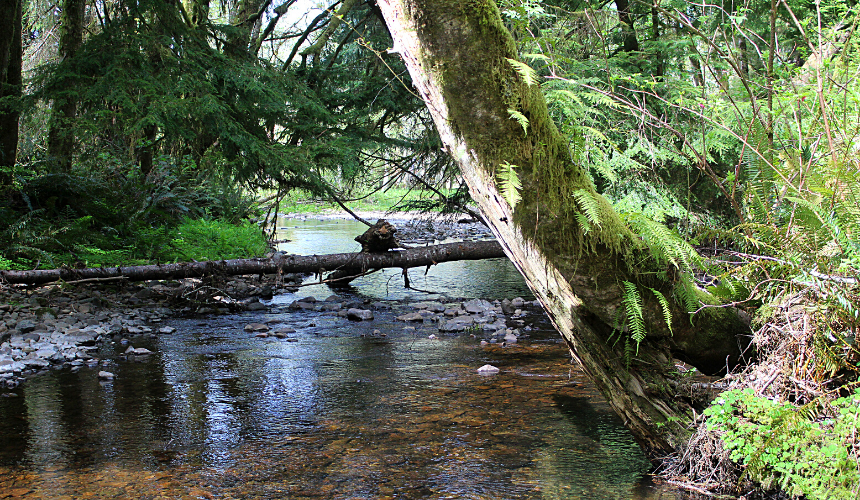
In late spring and early summer, North Coast Land Conservancy’s Necanicum Forest Habitat Reserve in Clatsop County is blanketed with a sweet stillness that draws your attention to the songs of birds splashing on the banks of the Necanicum River and the rich, earthy scent wafting from a forest floor that is covered in wood sorrel and stream violet, among other native plants.
“It’s just such a peaceful place,” says Land Steward Eric Owen, who early on developed an affinity for this special 28-acre property where the Necanicum River meets with Klootchy Creek on the outskirts of Seaside. The habitat reserve is adjacent to Klootchy Creek County Park, which creates an uninterrupted 1.7-mile stretch of conserved Necanicum River corridor and contains more than a quarter-mile of Klootchy Creek frontage.

Signs of beaver activity are quite common in the Necanicum Forest.
The property is characterized as a vibrant second-growth forest that features alder, Sitka spruce and hemlock trees. Since NCLC acquired the habitat reserve in December 2010, stewardship efforts have involved planting both trees and shrubs, including salmonberry, elderberry and Indian plum. In addition, stewardship staff and volunteers have spent time removing several species of non-native invasive plants that have made a home in the Necanicum Forest. Some of the main culprits include policeman’s helmet and Japanese knotweed, both of which grow aggressively.
Necanicum Forest is part of NCLC’s Necanicum Wildlife Corridor. Although it is rare to come face to face with a beaver, the remnants of their presence are plentiful. For example, it’s not uncommon to happen upon a gnawed-down tree bearing teeth marks. Sometimes they get to the young trees intentionally planted by NCLC, but that’s not a major concern, Eric says,
“That’s part of the reason you’re planting—for the wildlife,” he adds.

A row of alder trees in the Necanicum Forest is bathed with late-spring sunlight.
Comments